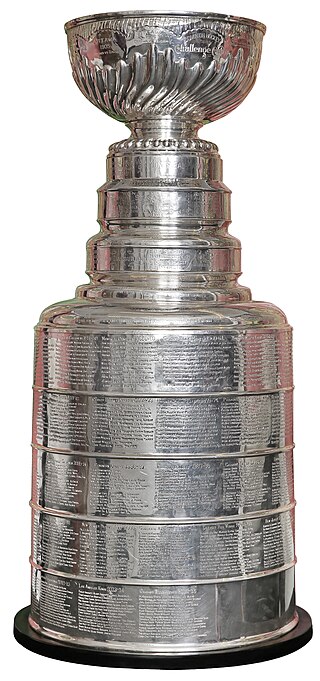
The Stanley Cup is the championship trophy awarded annually to the National Hockey League (NHL) playoff champion. It is the oldest existing trophy to be awarded to a professional sports franchise in North America, and the International Ice Hockey Federation (IIHF) considers it to be one of the "most important championships available to the sport". The trophy was commissioned in 1892 as the Dominion Hockey Challenge Cup and is named after Lord Stanley of Preston, the Governor General of Canada, who donated it as an award to Canada's top-ranking amateur ice hockey club. The entire Stanley family supported the sport, the sons and daughters all playing and promoting the game. The first Cup was awarded in 1893 to the Montreal Hockey Club, and winners from 1893 to 1914 were determined by challenge games and league play. Professional teams first became eligible to challenge for the Stanley Cup in 1906. In 1915, the National Hockey Association (NHA) and the Pacific Coast Hockey Association (PCHA), the two main professional ice hockey organizations, reached an agreement in which their respective champions would face each other annually for the Stanley Cup. It was established as the de facto championship trophy of the NHL in 1926 and then the de jure NHL championship prize in 1947.
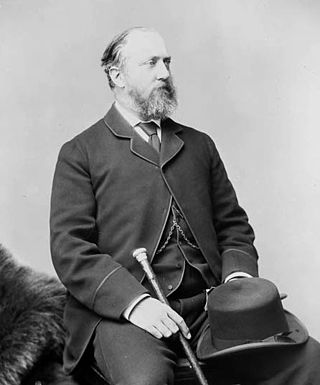
Frederick Arthur Stanley, 16th Earl of Derby, styled as Hon. Frederick Stanley from 1844 to 1886 and as The Lord Stanley of Preston between 1886 and 1893, was a Conservative Party politician in the United Kingdom who served as Colonial Secretary from 1885 to 1886 and Governor General of Canada from 1888 to 1893. An avid sportsman, he built Stanley House Stables in England and is famous in North America for presenting Canada with the Stanley Cup, the championship trophy in ice hockey. Stanley was also one of the original inductees of the Hockey Hall of Fame.

The Ontario Hockey Association (OHA) is the governing body for the majority of junior and senior level ice hockey teams in the province of Ontario. Founded in 1890, the OHA is sanctioned by the Ontario Hockey Federation along with the Northern Ontario Hockey Association. Other Ontario sanctioning bodies along with the OHF include the Hockey Eastern Ontario and Hockey Northwestern Ontario. The OHA controls three tiers of junior hockey; the "Tier 2 Junior "A", Junior "B", Junior "C", and one senior hockey league, Allan Cup Hockey.

The Aberdeen Pavilion is an exhibition hall in Ottawa, Ontario, Canada. Overlooking the Rideau Canal, it is located in Lansdowne Park, Ottawa's historic fairgrounds. For many years, the building was known as the "Cattle Castle", due to its use for the Central Canada Exhibition's agricultural exhibits and shows. It is the last surviving Canadian example of what was once a common form of Victorian exhibition hall, and was designated a National Historic Site of Canada in 1983.

François Xavier Boucher was a Canadian professional ice hockey player and executive. Boucher played the forward position for the Ottawa Senators and New York Rangers in the National Hockey League (NHL) and the Vancouver Maroons in the Pacific Coast Hockey Association (PCHA) between 1921 and 1938, and again from 1943 to 1944. Boucher later became coach and the general manager of the New York Rangers between 1939 and 1955. He won the Stanley Cup three times, all with the Rangers: in 1928 and 1933 as a player, and in 1940 as the coach. Boucher was inducted into the Hockey Hall of Fame in 1958. Three of his brothers also played in the NHL, including Georges, who was also inducted into the Hockey Hall of Fame.
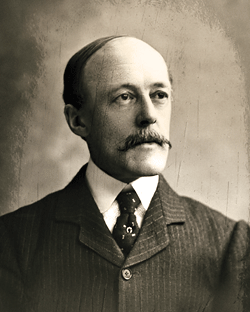
James George Aylwin Creighton was a Canadian lawyer, engineer, journalist and athlete. He is credited with organizing the first recorded indoor ice hockey match at Montreal, Quebec, Canada in 1875. He helped popularize the sport in Montreal and later in Ottawa, Ontario, Canada after he moved to Ottawa in 1882 where he served for 48 years as the law clerk to the Senate of Canada.
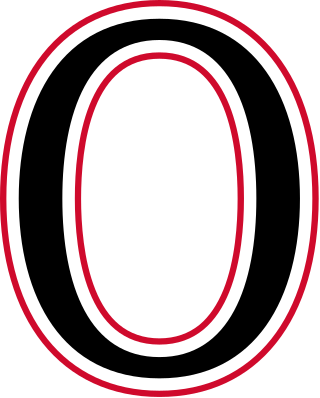
The Ottawa Senators were an ice hockey team based in Ottawa, which existed from 1883 to 1954. The club was the first hockey club in Ontario, a founding member of the National Hockey League (NHL) and played in the NHL from 1917 until 1934. The club, which was officially the Ottawa Hockey Club, was known by several nicknames, including the Generals in the 1890s, the Silver Seven from 1903 to 1907 and the Senators dating from 1908.
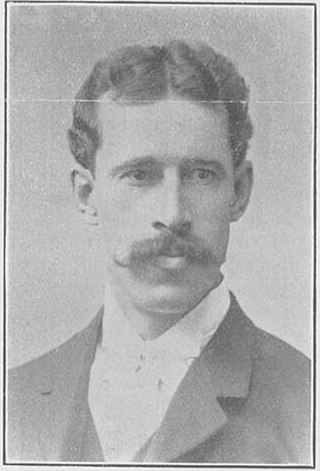
Philip Dansken Ross was a Canadian journalist, newspaper publisher, amateur athlete, and ice hockey administrator.

Confederation Park(French: Parc de la Confédération) is a public park and National Historic Site of Canada, located in the downtown core of Ottawa, Ontario, Canada. It is bordered on the south by Laurier Avenue and Ottawa City Hall; on the east by the Rideau Canal and National Defence Headquarters; on the north by the Mackenzie King Bridge, the Rideau Centre and the National Arts Centre; and to the west by Elgin Street and the Lord Elgin Hotel.
Dey's Arena, also known as Dey Brothers Rink, Dey's Skating Rink and The Arena, were a series of ice rinks and arenas located in Ottawa, Ontario, that hold importance in the early development of the organized sport of ice hockey in Canada. It was the home arena of the Ottawa Hockey Club, variously known as the Generals, the Silver Seven and the Senators from the 1890s until 1923, although it is known that games were also played at the Rideau Skating Rink in the 1890s and the Aberdeen Pavilion in 1904. The rink and arenas were built by two generations of the Dey family, who were prominent in Ottawa at the time, with a thriving boat works business serving the lumber business. The Dey family also played hockey.
The Ottawa City Hockey League (OCHL) was an amateur ice hockey league with junior, intermediate and senior level men's teams in Ottawa, Canada. Founded in 1890 by the local Ottawa Hockey Association, the OCHL was created to organize play within the city of Ottawa. It is considered the second ice hockey league to form in Canada.
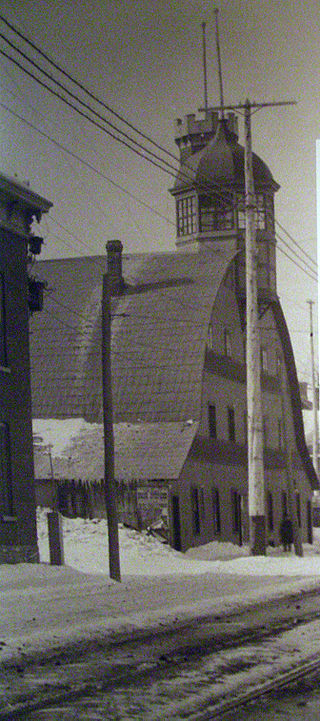
The Rideau Skating Rink was an indoor skating and curling facility located in Ottawa, Ontario, Canada. Consisting of a curling rink and a skating rink, it was one of the first indoor rinks in Canada. The Rideau Rink was scheduled to open on January 10, 1889, but unseasonably mild weather postponed the grand opening to February 1. It opened on January 25, 1889 for select V.I.P.s although this was a misunderstanding and should not have denied entry to season ticket holders. It was located on Theodore Street, at Waller Street, at the present location of the Arts Hall of the University of Ottawa, near the Rideau Canal.
In Ottawa, Canada, ice hockey clubs date back to the first decade of recorded organized ice hockey play. The men's senior-level Ottawa Hockey Club is known to have played in a Canadian championship in 1884. Today, Ottawa hockey clubs are represented in all age brackets, in both men's and women's, in amateur and professional.
John Augustus Barron was a Canadian politician and lawyer. He was elected to the House of Commons of Canada in 1887 as Member of the Liberal Party in the riding of Victoria North. He was re-elected in 1891 but unseated by petition and lost in the riding by-election on February 11, 1892. Prior to his federal experience, he was reeve of Lindsay, Ontario for eight years. He also participated in the Fenian Raids between 1866 and 1871. He also authored numerous books.
The 1891–92 Ottawa Hockey Club season was the club's seventh season of play. The Club would play in the Amateur Hockey Association of Canada, the Ontario Hockey Association (OHA) and inter-city play. Ottawa would win their second straight OHA championship. Ottawa would also win the AHAC championship on January 10, and hold it until March 7.
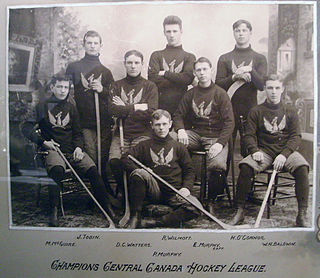
The Ottawa Capitals were the competing clubs of the Capital Amateur Athletic Association (CAAA) of Ottawa, Ontario, Canada. The Association competed in ice hockey, lacrosse and other athletics.

The Arena, also known as Dey's Arena was an arena for ice hockey located in Ottawa, Ontario, Canada. It was the home of the Ottawa Hockey Club from 1908 to 1923. It was the third in a series of ice hockey venues built by the Dey family of Ottawa. At the time of its building, it was Canada's largest arena.

The first instances of organized women's ice hockey in Canada date back to the 1890s when it was played at the university level. The Women's Hockey Association claims that the city of Ottawa, Ontario hosted the first game in 1891. In 1920, Lady Meredith, an avid sportswoman and wife of Sir Vincent Meredith of Montreal donated the Lady Meredith Cup to the Quebec Ladies' Hockey Association, said to be the first women's ice hockey trophy created for a competition in Canada. At the time women competed in ankle-length skirts.

Ice hockey, simply referred to as "hockey" in both English and French in Canada, dates back to the 19th century. The sport is very popular and played year-round and at every level in the country. Born of various influences from stick-and-ball games brought from the United Kingdom and indigenous games, the contemporary sport of ice hockey originated in Montreal. It is the official national winter sport of Canada. Hockey is widely considered Canada's national pastime, with high levels of participation by children, men, and women at various levels of competition.

The Lord Stanley's Gift Monument is a monument in Ottawa, Ontario, Canada. It commemorates the donation of the Stanley Cup ice hockey championship trophy by Canada's Governor-General the Lord Stanley of Preston in 1893. It is located on the eastern end of the Sparks Street Mall. It was constructed at the culmination of a public campaign to commemorate the donation of the trophy.
















